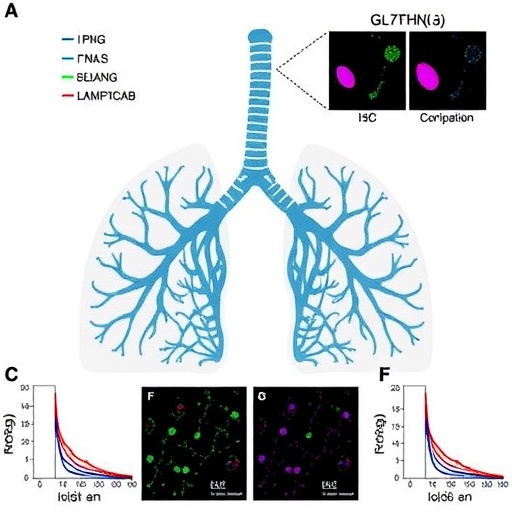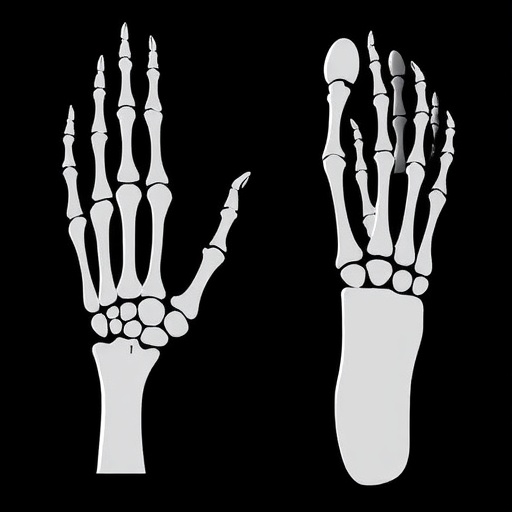Acute Lung Injury (ALI) remains a formidable challenge in critical care medicine, marked by devastating inflammation of the lung parenchyma and persistent hypoxemia. As mortality rates remain high, unraveling the molecular drivers of this pathological condition is imperative for the development of effective therapies. Recent advances have spotlighted the epigenetic regulation of gene expression, particularly via N6-methyladenosine (m6A) RNA methylation, as a pivotal mechanism influencing ALI progression. A comprehensive review published in the Journal of Intensive Medicine on August 20, 2025, delves into the intricate role of m6A methylation and its regulatory proteins in ALI, shedding light on the dynamic and complex molecular landscape that governs pulmonary injury responses.
m6A methylation involves the addition of a methyl group to the nitrogen-6 position of adenosine residues within RNA molecules, modulating RNA metabolism including translation, splicing, stability, and nuclear export. This reversible modification is orchestrated by three classes of proteins: writers, erasers, and readers. Writers such as methyltransferase-like 3 (METTL3) and methyltransferase-like 14 (METTL14) deposit the methyl mark; erasers including fat mass and obesity-associated protein (FTO) and AlkB homolog 5 (ALKBH5) remove it; while readers like YTH domain family proteins and insulin-like growth factor 2 mRNA-binding proteins (IGF2BPs) decode the m6A signal to influence downstream RNA fate. Each component plays a unique and critical role in the pathogenesis of ALI, offering a wealth of therapeutic targets.
Among the m6A writers, METTL3 has emerged as a central mediator exacerbating lung injury. Experimental evidence reveals that METTL3 modifies key messenger RNAs (mRNAs) and non-coding RNAs, thereby enhancing alveolar epithelial cell apoptosis, inflammatory cytokine production, and pyroptotic cell death—a highly inflammatory form of programmed cell demise. Remarkably, downregulation of METTL3 attenuates these damaging processes, highlighting its potential as a molecular switch in controlling ALI severity.
Similarly, METTL14 deficiency dampens the inflammatory milieu within the lungs by significantly reducing pro-inflammatory cytokines and inhibiting activation of inflammasomes—multiprotein complexes crucial for innate immune responses. By limiting inflammasome activity, METTL14 knockdown diminishes pulmonary edema and tissue injury, conveying protective effects in experimental ALI models. This showcases how manipulating m6A writer activity can recalibrate harmful inflammatory cascades in lung tissue.
Another writer, METTL4, although less studied, has been implicated in ferroptosis—a regulated, iron-dependent form of cell death increasingly recognized in ALI pathology. METTL4 deletion downregulates ferroptosis-related markers in alveolar epithelial cells, alleviating cellular demise and lung damage. The emerging link between m6A methylation and ferroptosis introduces an additional layer of complexity to the molecular regulation of ALI.
On the flip side, m6A erasers dictate the removal of methyl marks, balancing the epigenetic landscape. FTO knockout experiments demonstrate alleviation of alveolar structural disruption and pulmonary inflammation, indicating that FTO activity exacerbates tissue injury. Intriguingly, elevated FTO levels impair microRNA function, thereby amplifying inflammatory signaling and macrophage responses, particularly in obese murine models. This positions FTO as a dual-edged player whose modulation may have therapeutic implications tailored to patient metabolic status.
ALKBH5, another m6A demethylase, fosters ferroptosis via stabilization of a circular RNA, revealing an unanticipated mechanism by which RNA modifications influence cell death pathways in ALI. This highlights the versatility of m6A regulation beyond linear RNAs, expanding the landscape of epigenetic control and its repercussions on pulmonary injury dynamics.
m6A readers decode methylation marks and dictate transcript fate. YTHDF1 impacts mitochondrial function and promotes polarization of macrophages to the pro-inflammatory M1 phenotype, thereby worsening tissue inflammation. Its role underscores how m6A reader activity integrates metabolic and immune responses during lung injury, reinforcing the concept of epitranscriptional regulation as a nexus of cellular crosstalk.
IGF2BP3, another reader with increased expression in lung tissue from patients suffering acute respiratory distress syndrome, signifies the human relevance of these molecular findings. Its elevated presence connects m6A reader activity with clinical disease severity, prompting further investigations into patient stratification and biomarker development based on m6A-related protein profiles.
Despite these advances, the review notes contradictory results in m6A research pertaining to ALI. Such discrepancies arise from factors including the dynamic and time-dependent nature of m6A methylation, variability in expression of m6A-related proteins across distinct lung cell populations, and heterogeneity in ALI modeling methods—from intraperitoneal lipopolysaccharide (LPS) injections to cecal ligation and puncture (CLP) surgeries. This variability emphasizes the need for standardized experimental protocols and logistically sound time-point analyses to resolve conflicting data.
Looking forward, translating these mechanistic insights into clinical validation remains paramount. Currently, most data derive from animal models; rigorous human clinical studies are necessary to confirm the role of m6A modifications in ALI pathophysiology. Additionally, dissecting cell-type-specific m6A regulation and unraveling intercellular signaling networks within the injured lung microenvironment will enhance understanding of tissue-specific epigenetic landscapes.
Integration of multiomics technologies coupled with advanced nanodelivery systems promises to revolutionize ALI treatment paradigms. Such approaches may enable precise targeting of m6A-modulatory proteins, facilitating the development of novel precision medicines tailored to individual molecular signatures. Ultimately, this synergistic strategy could significantly improve prognosis in patients suffering from acute lung injury and related syndromes.
This groundbreaking review authored by Professor Fangwei Li and Dr. Yating Hu represents a seminal step in delineating the multifaceted roles of m6A methylation in ALI. By bridging molecular biology with translational medicine, it lays a robust foundation for future research and therapeutic innovation poised to transform critical respiratory care.
Subject of Research: Not applicable
Article Title: N6-methyladenosine methylation in acute lung injury: Mechanisms and research progress
News Publication Date: 20-Aug-2025
Web References: Not provided
References: DOI: 10.1016/j.jointm.2025.07.001
Image Credits: Anjanettew
Tags: acute lung injury treatmentcritical care medicine advancesepigenetic regulation in lung diseasegene expression modulation in ALIinflammation in acute lung injuryJournal of Intensive Medicine reviewm6A RNA modificationmolecular mechanisms of ALIN6-methyladenosine methylationregulatory proteins in m6ARNA metabolism in pulmonary disorderstherapeutic targets for lung injuries






